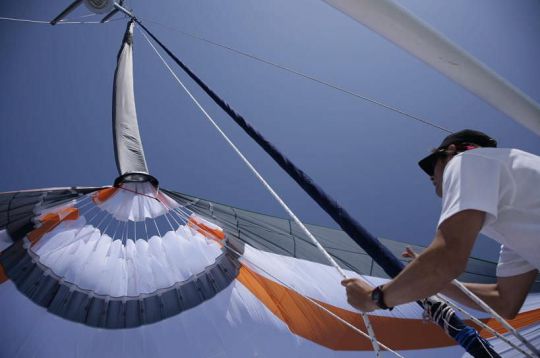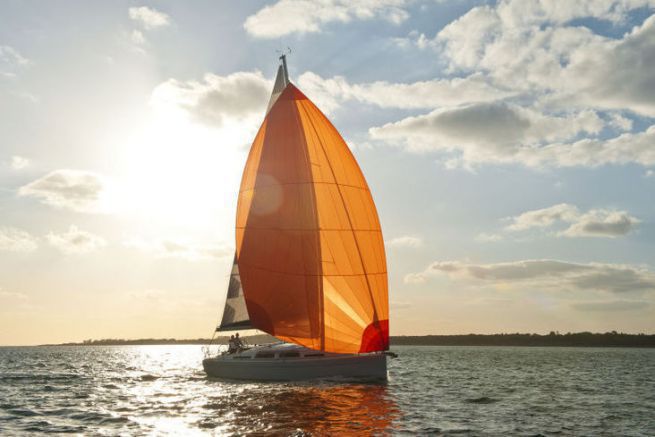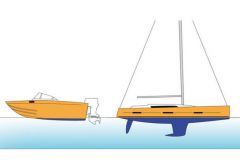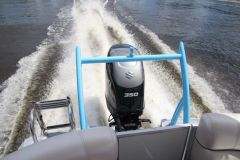Adapted equipment
To make spinnaker manoeuvres easier, you can opt for a sock or a Topdown furler. Find out more, see article on . The option that suits you best depends on the experience of the crew and your boat. It's hard to choose between reefing and chaussette??
In the first instance it may be your spinnaker that decides what you want to equip you with. The Topdown furler is only suitable for asymmetric spinnaker. So if you have a symmetrical spinnaker only the sock will help you.
The latter works with both types of spis. The sock may require more time on the front beach, but it works well in all wind strengths. Class 40 and Imoca single-handed racers use this system for the spinnaker.
However, on a small boat the sock may seem cumbersome to manoeuvre on the foredeck. If the size of the boat is less than 8 m, one can also consider avoiding the tricks and mechanisms and simplifying by making a traditional shipment.

A good preparation to hoist the spinnaker
Before hoisting the spinnaker, the preparation of the manoeuvring tips is essential. Make sure that the sheets pass well outside the boat (shrouds, lifelines, forestay, etc.) and through the blocks to the winch. Check that the halyard is on the correct side of the forestay.
For an asymmetric spinnaker, take the tack before hoisting. For a symmetrical spinnaker, make sure that the "spinnaker arm" passes correctly through the jaw of the spinnaker pole and that the pole is hoisted to the correct height. Finally, adjust the spinnaker pole downhaul and topping lift to prevent the pole from masturbating when the spinnaker inflates.

The procedure for sending the spinnaker
?Peu no matter how many times you and your crew have hoisted the spinnaker, it is always helpful to repeat the procedure.
1- At the helm or under autopilot, make sure that the heading and downwind angle will be maintained. This is essential for the smooth running of the spinnaker manoeuvre.
2- Make sure that the necessary bits - the sheets and possibly the spinnaker pole downhaul - are on the winches and ready for use. Release the sheet so that the mainsail at maximum helps "?couvrir?" the sail when hoisting.
3- Communicate, you must state aloud the steps and progress of the manoeuvre so that you and your crew are aware of what the other is doing. Do a final check and ask if everyone is ready to hoist the sail.
4- Once the sail is hoisted, trimmed and stable, it is time to stow the cockpit. The halyard must be furled in order to be used in case of emergency.
5- Then, finally, sit back and enjoy balade?!
Lowering the spinnaker is the reverse procedure. It will require the same preparation and communication. Above all, don't wait until the last minute to stow the canvas, plan for a lot of water to run downwind to manoeuvre without time constraints.
The handling of this slightly capricious sail is quite fast. Start using your spinnaker in light winds, force 2 for example. Then without pressure, gradually increase the wind strength as you and your crew gain confidence.
Spinnaker sailing offers a lot of fun and reduces distances, so don't hesitate to persevere in your learning.













